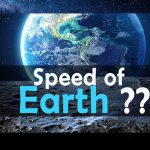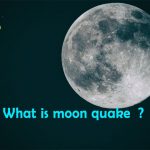Which is the longest Rainbow ?

We always become amazed when we see rainbow, right ? There are so many amazing facts abouts that colourful arc. Lets see. A rainbow is a meteorological phenomenon that is caused by reflection, refraction and dispersion of light in water droplets. This will resulting in a spectrum of light appearing in the sky. Rainbow is seen in whe form of a circular arc which is multicoloured. It consists of an arc that forms in the sky of seven colours, namely Violet, Indigo, Blue, Green, Yellow, Orange and Red, also called VIBGYOR for short.
How Rainbow is formed ?
Water droplets can act like little mirrors. When a ray of sunlight strikes one of these tiny spheres of water, most of the light bounces off its rear wall and is reflected back. During a rain shower, the air is full of water droplets acting together like a reflective curtain made of millions of minuscule mirrors casting the sunlight back at you.
As the ray of light enters and leaves the water droplet, its direction is also changed slightly in a process called refraction. Each color is refracted in a marginally different direction, creating the impression of a fan of colors.Also rainbows caused by sunlight always appear in the section of sky directly opposite the sun. The observer normally sees only an arc formed by illuminated droplets above the ground, and centered on a line from the sun to the observer’s eye.
In a primary rainbow, the arc shows red on the outer part and violet on the inner side. This rainbow is caused by light being refracted when entering a droplet of water, then reflected inside on the back of the droplet and refracted again when leaving it.
Some amazing facts about rainbow
Rainbow is not situated at a specified distance
A rainbow is not situated at a specified distance, instead it will always be visible to a person at the precise angle freshwater droplets reflect the light which is 42 degrees in the opposite direction of the sun
You are less likely to see a rainbow in the winter
You are less likely to see a rainbow in the winter. Because of snow ! A rainbow is the result of light passing through a spectrum – in most cases, a collection of raindrops – and, therefore, having that light broken up and refracted into individual colors.
You can never get to the end of a rainbow
You can never actually get to the end of a rainbow! Because a rainbow is based on the orientation of the observer (you) and the light source (the sun), when you move, the rainbow will move, too.
Lunar Rainbow
A “moonbow” is a rare lunar rainbow or night time rainbow produced by light from the moon. Our eyes see it as white even though all colors are faintly presen
You can see a circular rainbow from the sky
While you’re on the ground, you can only observe the classic semi-circular rainbow (hence the word ‘bow’). However, when you’re flying in an airplane and looking down below, you can actually see a rainbow as a complete circle
Earth is the only planet in the solar system with rainbows
Earth is the only planet in our solar system capable of creating rainbows – so far. That’s because Earth is the only planet with consistent liquid precipitation and direct sunlight.
On the Saturn moon of Titan, scientists believe there may be liquid methane rainstorms, but the atmosphere is so hazy that it’s unlikely enough sunlight passes through the methane drops to create a rainbow.
The Greeks and the Romans believed rainbows to be a path from the gods
In ancient times, the Greek goddess Iris (Arcus, to the Romans) was personified by the rainbow, with many works of art actually depicting her taking the form of a rainbow.
According to Greek mythology, Iris, who is the female counterpart to the messenger god Hermes, would use her pitcher to scoop up water and bring it into the clouds in order to form a rainbow. Her rainbow then became a bridge between Mount Olympus, where the gods and goddesses lived, and the Earth.
The longest-observed rainbow lasted for nearly 9 hours
The average rainbow is observable for less than an hour. But in 2017, students and professors of the Chinese Culture University, located high in the mountains of Taipei, Taiwan, observed a rainbow for 8 hours and 58 minutes, from 6:57 am until 3:55 pm.
Prior to this event, the longest-lasting rainbow was seen over Sheffield, England in 1994. That rainbow, as documented by the Guinness Book of World Records, lasted from about 9:00 am to 3:00 pm.
No two people see the exact same rainbow
Two people are standing next to one another looking at a rainbow, you’re still not seeing the exact same rainbow ! That’s because a rainbow has not physical presence; a rainbow is a purely optical phenomenon, and its appearance – its precise shape, arc, and the width of its color bands – will be slightly different according to the eye of the beholder.
A double rainbow appears when light is reflected twice in a raindrop
A double rainbow occurs when the light is reflected twice in the raindrop, and thus, you can see two distinct reflections that are coming from two different angles.
The secondary rainbow – which will be a little bit higher and fainter in color than the primary rainbow – will actually have its colors reversed. Instead of the standard “Roy G. Biv” (for red, orange, yellow, green, blue, indigo, violet), you’ll see the colors as Vib G. Yor!
Isaac Newton described the formation of rainbows
The legendary scientist, Isaac Newton described the formation of rainbows in a detailed way. Sunlight is made of the all the colors that you see in the rainbow. When all these colors mix, it’s called white light, which we see every day. And when the sunlight enters through the white light, we get a rainbow.
When the sunlight is reflected twice inside a raindrop, we get a double or secondary rainbow. The double rainbow is a fainter arc seen outside the primary arc.
















